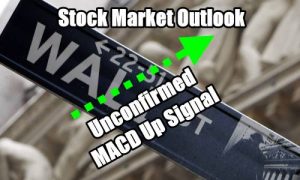
On Thursday investors saw Wednesday’s euphoria collapse as data showed productivity sank 7.5% annualized for the first quarter, marking the biggest decline since 1947. The decline was caused by supply shortages and bottlenecks in delivery chains. Analysts jumped on the numbers and announced that inflation was not going to be beaten back by the Fed and that a recession was now far more likely. Many predicted it would be among the worst types of recession with inflation and rising rates. For a lot of investors the comments and viewpoints were at least something to “hang their hats on” and selling erupted near the start of the day and grew until by the close 90% of all volume was to the downside. A washout day. This is typical of a bear market sell-off as investors start to sell and then as selling intensifies it drags in more sellers. Soon fear rises that by holding onto shares in the face of what looks like determined selling, the remaining “hold-outs” are basically making a huge mistake. The stocks they are holding, suddenly become a liability and many investors convince themselves that selling now, even for losses, won’t matter because they will buy back the same shares for far less.
Most of the time this is not the case and few investors, even the pros, can time buying back sold shares. On Wednesday investors climbed into a rising roller coaster, fearful they would miss the rally from the bottom. On Thursday we saw the same investors on another emotional roller coaster that headed lower as investors bailed on the same stocks bought the day before. This is not investing but fear. Fear of missing the rally from what is perceived to be a “bottom” and fear of being caught holding stocks that overnight could plunge still further in value. This is why in the great 1970’s oil embargo bear market I changed completely my method of investing to avoid these types of events, both up and down. As a result, Wednesday’s rally was highly profitable as was Thursday’s decline.
The damage done over the past two days of rallying and then collapsing is not just retail investors. Volumes on both days advise us that the so-called “pros” and fund managers were also caught by the trauma and dragged into the market, both days, buying and then selling.
On Thursday the S&P collapsed 153 points wiping out Wednesday’s 124 point gain and closing at 4146 or back at the 4150 support level. The NASDAQ was far worse, plunging 647 points and wiping on Wednesday’s 401 gain and Monday’s 201 point gain. The index closed at 12,317 and back in bear market territory.
Let’s review Thursday’s closing numbers to see what to expect for Friday as investors prepare for another potential market moving event, April’s unemployment numbers.
Stock Market Outlook Chart Comments At The Close on Thu May 5 2022
On Wednesday the day ended with a bullish candlestick that advised some morning selling should be expected but nothing like we saw. This shows just how emotional the market has become this year. On Thursday the closing candlestick is signaling the outlook is back to bearish but there is a long shadow (tail) on the candlestick which often signals a small bounce could be expected. I wouldn’t trust that signal at this point. Normally after a significant reversal such as we saw on Thursday, investors are exhausted and they take a “time-out”. That means Friday will close lower.
The Upper Bollinger Band and Lower Bollinger Band are both now falling quickly indicating more downside is to be expected, The original forecast was for the S&P to reach 4000 and then we might see a bounce before it moved still lower. The Bollinger Bands are now predicting this outcome.
All moving averages are still bearish and there are still three sell signals in the index. Even the 200 day is now falling below 4000 which is another signal that more downside should be expected.
The chart is 98% bearish for Friday and unlike the outlook on Wednesday evening, any dips on Friday are not opportunities to setup trades for a rebound rally. After Friday’s unemployment numbers, the next event that might spark some buying interest could be on Wednesday when the consumer price index and core CPI are released. If they show any hints of lower inflation, that could spark buying interest. For now though, it seems unlikely.

Stock Market Outlook: Technical Indicators Review:
Momentum: Momentum is falling and negative.
- Settings: For momentum I use a 10 period when studying market direction.
MACD Histogram: MACD (Moving Averages Convergence / Divergence) issued a down signal Friday April 8. On Thursday the down signal strengthened, but not as much as you would think, considering the huge decline. The histogram also gained some of its bearish strength back.
- Settings: For MACD Histogram, I am using the Fast Points set at 13, Slow Points at 26 and Smoothing at 9.
Ultimate Oscillator: The Ultimate Oscillator is falling and negative.
- Settings: The Ultimate Oscillator settings are: Period 1 is 5, Period 2 is 10, Period 3 is 15, Factor 1 is 4, Factor 2 is 2 and Factor 3 is 1. These are not the default settings but are the settings I use with the S&P 500 chart set for 1 to 3 months.
Slow Stochastic: The Slow Stochastic still has an up signal in place.
Settings: For the Slow Stochastic I use the K period of 14 and D period of 3. The Slow Stochastic tries to predict the market direction further out than just one day.
Relative Strength Index: The RSI signal is falling.
- Settings: The relative strength index is set for a period of 5 which gives it 5 days of market movement to monitor. It is often the first indicator to show an overbought or oversold signal.
Rate of Change: The rate of change signal is falling.
- Settings: Rate Of Change is set for a 21 period. This indicator looks back 21 days and compares price action from the past to the present. With the Rate Of Change, prices are rising when signals are positive. Conversely, prices are falling when signals are negative. As an advance rises the Rate Of Change signal should also rise higher, otherwise the rally is suspect. A decline should see the Rate Of Change fall into negative signals. The more negative the signals the stronger the decline.
Support and Resistance Levels To Be Aware Of:
4550 is light resistance
4525 is light resistance
4500 is resistance
4490 is light resistance
4475 is light resistance
4450 is light resistance
4400 is resistance
4370 is light support
4350 is light resistance
4300 is light resistance
4290 is light resistance
4270 is light resistance
4250 was good support
4225 was light support
4200 is good support
4150 is good support
4100 is light support
4050 is light support
4025 is light support
4000 is good support
Stock Market Outlook for Tomorrow – Fri May 6 2022
For Friday, the unemployment numbers probably won’t make much impact on the index. Investors were stung by Thursday’s decline fresh on the back of Wednesday’s massive rally. The emotional roller coaster investors have been on for this year is not changing but continuing. Friday’s unemployment number would have to show declining unemployment and an increase in the labor participation rate to even get some interest from investors.
Friday will end lower but a prediction as to how low is hard to pick. A drop to 4000 is however likely shortly. That could spark a rally, even a short one, but the technical indicators do not show a drop that big would be expected for Friday. Instead the outlook appears for the index to close below 4100.
Potential Market Moving Events
Friday:
8:30 April nonfarm payrolls and unemployment rate
8:30 Average hourly earnings (another inflation indicator)
8:30 Labor force participation rate
Stock Market Outlook Archives
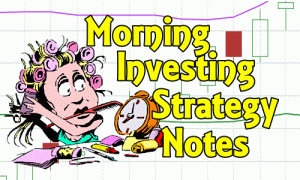
Morning Investing Strategy Notes for Fri Apr 4 2025

Stock Market Outlook for Fri Apr 4 2025 – All About The March Jobs Numbers

Morning Investing Strategy Notes for Thu Apr 3 2025

Stock Market Outlook for Thu Apr 3 2025 – Bearish Following Higher Than Expected Tariffs

Morning Investing Strategy Notes for Wed Apr 2 2025
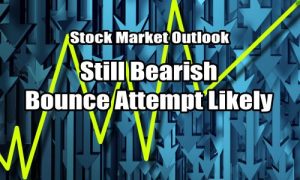
Stock Market Outlook for Wed Apr 2 2025 – Tariffs Day – Still Bearish – Bounce Attempt Likely

Morning Investing Strategy Notes for Tue Apr 1 2025
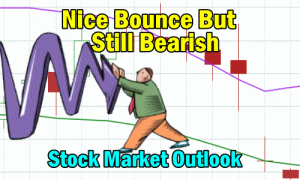
Stock Market Outlook for Tue Apr 1 2025 – Nice Bounce But Still Bearish

Morning Investing Strategy Notes for Mon Mar 31 2025

Stock Market Outlook for Mon Mar 31 2025 – Bounce Attempt Likely But Still Bearish

Morning Investing Strategy Notes for Fri Mar 28 2025
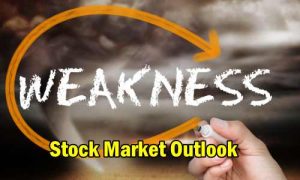
Stock Market Outlook for Fri Mar 28 2025 – Weakness Into The Weekend

Morning Investing Strategy Notes for Thu Mar 27 2025
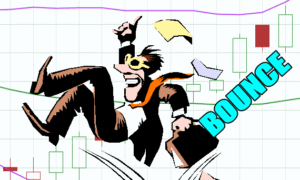
Stock Market Outlook for Thu Mar 27 2025 – Bounce Attempt

Morning Investing Strategy Notes for Wed Mar 26 2025
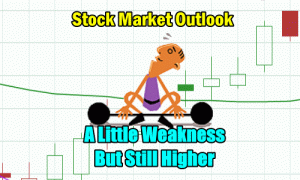
Stock Market Outlook for Wed Mar 26 2025 – A Little Weakness But Still Higher

Morning Investing Strategy Notes for Tue Mar 25 2025
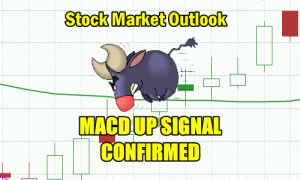
Stock Market Outlook for Tue Mar 25 2025 – MACD Up Signal Confirmed

Morning Investing Strategy Notes for Mon Mar 24 2025
